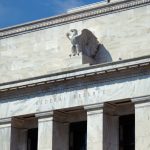WASHINGTON – In the previous financial crisis, the nation’s biggest banks were the villains. This time, they may be the heroes. Wall Street titans whose actions once angered voters on the right and left have become safe havens for anxious Americans and a source of financial backing for wounded institutions.
Tens of billions of dollars in deposits have flowed into the coffers of giant banks such as JPMorgan Chase and Bank of America following the panic surrounding the March 10 failure of Silicon Valley Bank, industry executives said. Consumers and businesses spooked by the abrupt collapse of a bank with more than $200 billion in assets are fleeing to the perceived safety of the mammoth institutions that sparked populist outrage with their risky behavior before the 2008 crisis.
“Everyone is moving their money or has moved it,” said Cameron Hardesty, 37, owner of Poppy Flowers, an online wedding floral business that transferred a seven-figure sum from SVB to new accounts at JP Morgan and BofA. “I spent 10 years building to this point. This is my life’s work. To think of it vanishing in an instant – because of these forces out of my control – it was a scary moment.”
The shift could mean greater consolidation of the U.S. banking industry, defying President Biden’s efforts to promote more options for Americans seeking financial services. The nation’s five largest bank holding companies at the end of last year controlled almost $13 trillion, or roughly 47% of total industry assets.
That figure is down from about 52% 10 years ago, according to the Federal Reserve Bank of New York, reflecting growth in the unregulated private markets that now provide more than half of all consumer and business credit.
On Friday, Deputy Treasury Secretary Wally Adeyemo said the panic appeared to be subsiding.
“Over the course of the workweek, deposit flows have stabilized in regional and small banks. And, in some cases, have modestly reversed,” he told CNBC.
It is too soon to know precisely how much money left regional banks for Wall Street’s biggest. Those figures will not be known until individual banks report their quarterly earnings. But when SVB got into trouble earlier this month, $42 billion fled in a single day.
“The midsize regionals and up is where the deposit flows are coming from into the [giant banks]. The regionals are suffering,” said Cam Fine, chief executive of Calvert Advisors and former president of the Independent Community Bankers of America trade group.
Even a modest exodus from midsize institutions could depress lending and sap the economy’s forward momentum just as the Fed’s year-long series of interest rate increases starts to bite. As customers withdraw funds, regional banks will need to pay more for funding, either by raising interest rates on deposits or by paying higher lending costs in the wholesale market.
There were 4,237 banks in the United States as of 2021, down from more than 10,000 in 1994. As the industry becomes dominated by behemoths such as JPMorgan Chase – whose $3.8 trillion in assets is larger than the entire French economy – small businesses worry about losing a personal connection with their lender.
Banks that are smaller than SVB are key players in important markets, such as commercial real estate, where they account for roughly two-thirds of all loans. As regional bank profits erode, bankers could pull back on making new loans, chilling the economy and perhaps causing problems for heavily indebted borrowers who need to rollover their borrowings.
“Now the slowdown could come a lot faster,” said Torsten Slok, chief economist for Apollo Global Management in New York.
Memories of the global financial crisis were still fresh in January 2010 when President Barack Obama met with his economic team to sketch out reform plans, including preventing “the further consolidation of our financial system.”
The nation’s largest banks were at the heart of the crisis that sent the jobless rate soaring to 10% and cost U.S. households more than $11 trillion in wealth. After gambling on opaque investments with borrowed money, several Wall Street firms required a taxpayer bailout.
“The American people will not be served by a financial system that comprises just a few massive firms. That’s not good for consumers; it’s not good for the economy,” Obama said.
In the aftermath, the United States established new rules for designating the largest, most interconnected institutions as “systemically important,” meaning their sudden collapse could upend the entire financial system.
Those “too big to fail” banks must hold more capital in reserve to guard against unexpected setbacks, pass periodic stress tests and prepare so-called “living wills” that would allow them to move smoothly through bankruptcy.
Today, that list includes JPMorgan, Bank of America, Citigroup, Goldman Sachs, Wells Fargo, Morgan Stanley, Bank of New York Mellon and State Street.
The singular significance of the megabanks was evident last week.
In Europe, Credit Suisse, one of the continent’s megabanks, said it would borrow 50 billion Swiss francs, or about $54 billion, from the Swiss National Bank to shore up its wobbly finances and avert a potential European financial crisis.
In the United States, meanwhile, 11 banks, including the six largest, teamed up to deposit $30 billion in First Republic Bank. The move was aimed at restoring investor confidence in the San Francisco-based bank, which serves a largely affluent clientele, following a 50% drop in its share price.
On Thursday, the bank acknowledged suffering daily deposit outflows, but said they have “slowed considerably.”
Goldman Sachs, the fifth-largest bank holding company, acquired a portion of SVB’s bond portfolio valued at more than $21 billion days before the bank collapsed. The big banks now could end up acquiring the rest of SVB or the other institutions that have failed in recent days: Signature Bank of New York and Silvergate Capital, which announced it would voluntarily liquidate after a crypto market plunge spooked depositors.
The government’s decision to guarantee all deposits at SVB and Signature has left unclear what it would do if another regional bank failed. The murky regulatory picture may encourage further consolidation, said some investors, including Bill Ackman, CEO of hedge fund Pershing Square.
Most regional banks have little in common with SVB, which catered to venture capitalists and the stars of the technology arena and had an almost entirely uninsured deposit base. The failed bank’s typical account held $1.25 million compared with the regional bank average of $177,000, according to Moody’s Analytics.
When the government closed SVB and Signature, it guaranteed all deposits, including those that exceeded the $250,000 insured limit. There is no public indication that funds at many other banks that have seen their stock prices decline are at risk, and it is difficult to imagine the government failing to protect depositors at any bank that might fail.
But rather than bear even a remote chance of loss at a smaller bank, many depositors are sheltering their money at the biggest banks. While the same $250,000 limit applies to accounts at those larger institutions, the assumption is that the government would never let them fail, analysts said.
“I’m scared to have all of our money in one account,” said Poppy Flowers’ Hardesty, who after leaving SVB opened three new accounts at JP Morgan, BofA and First Horizons, a regional lender.
Political fights over the concentration of banking power have been a recurring feature of U.S. history. In the 1830s, President Andrew Jackson famously fought a “bank war” to shutter the federal Second Bank of the United States in favor of patronizing numerous state banks.
That populist energy was on display last week when Treasury Secretary Janet L. Yellen testified before the Senate Finance Committee. Sen. James Lankford (R-Okla.) said the administration’s decision to guarantee all deposits at SVB and Signature – not just those up to the insured limit of $250,000 – set a precedent that would encourage large depositors to switch from tiny community banks to larger institutions.
“That is happening right now,” Lankford said. “It’s happening because you’re fully ensured, no matter what the amount is, if you’re in a big bank; you’re not fully ensured if you’re in a community bank.”
In an interview, Gene Ludwig, former comptroller of the currency, said the administration needs to take steps to ensure a level playing field for banks of all sizes.
“They have to make explicit that one way or the other, the U.S. regulatory system will make sure your deposits are safe in any federally regulated institution,” he said.
Banking has traditionally been less concentrated in the United States than in other advanced economies such as Canada, France and Japan. The five largest U.S. banks at the end of 2021 held about half of all commercial bank assets in the country, according to a World Bank database. The comparable figure for Germany was 94%.
Still, the largest U.S. banks now hold a far greater share of the system’s total assets than they did two decades ago. And that troubles many experts.
“It has all sorts of implications for our economic system. There’s evidence it can lead to greater concentration in industry in general. And I’m very concerned about the political consequences of increasing American corporate power, especially in the banking system,” said Morgan Ricks, a financial regulation expert at Vanderbilt Law School.
While greater bank industry consolidation is likely, preserving regional and local institutions is important for small businesses, said Mary Ann Scully, co-founder of Howard Bank in Baltimore. Smaller banks can devote the personal attention to local businesses that a megabank never would, she said.
“It’s somebody that really knows them, a trusted partner who will know them and give them advice,” she said.
Kevin Fromer, CEO of the Financial Services Forum, which represents the giant global institutions, said his group backs a diversified system, adding: “The largest banks are subject to the most rigorous regulation and supervision, they serve every part of the economy, and they support U.S. competitiveness overseas.”
The Biden administration has been cool to the notion of further bank industry consolidation. Warning against “excessive market power,” the president last year called for regulators to step up scrutiny of any proposed bank mergers.
Martin Gruenberg, chair of the Federal Deposit Insurance Commission, wants to tighten regulations governing bank mergers to take greater account of potential consequences for financial stability. As the FDIC prepared to auction the failed SVB over the weekend of March 11-12, it reportedly barred the giant banks from bidding.
“They should be worried. It obviously is a concern,” said economist Simon Johnson of the Massachusetts Institute of Technology. “Anything that makes them bigger means we’re creating a new form of systemic risk. This is a regrettable side effect of the current circumstances.”
© 2023 2022 Independent Media and affiliated companies. All rights reserved. Provided by SyndiGate Media Inc. (Syndigate.info).
©Florida Realtors®
Source link



